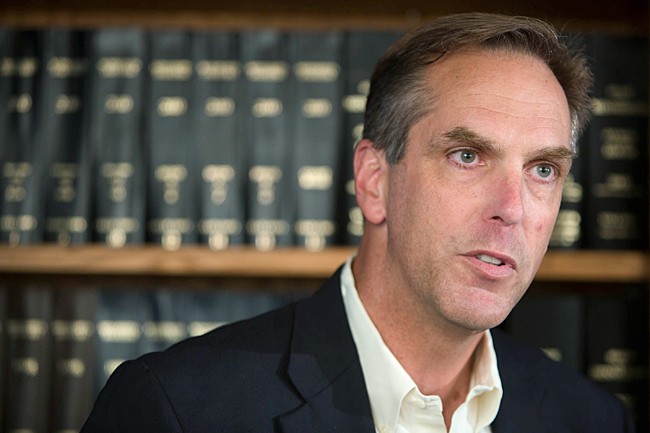Obama leaves congress in a cloud of dust, pushes ahead with emission limits

mike-mcfadden-questions
October 6, 2013
Friday September 20, the Obama White House further pushed ahead with the first-ever carbon limitations on power plants in the United States. President Obama set off this unprecedented movement by remarking that he hopes to have carbon emission limits set for all new power plants by the time he leaves office in 2017. Not only that, but Mr. Obama is pressing for greenhouse gas emission limits on existing power plants, which would mean the modification of currently functioning power plants within a 12-month period in order to comply with the new federal regulations
The proposed emission standards have aimed to cripple the coal industry and catalyzing the shift to natural gas, a cleaner form of energy. The new regulations, announced on Friday by Environmental Protection Agency administrator Gina McCarthy, represent the ever-boldening strategy of Mr. Obama to implement further environmental regulations before the end of his term; it is an attempt by the White House to bypass Congress using executive actions.
Currently, the average advanced coal plant emits roughly 1,800 pounds of carbon dioxide per hour, and the proposed regulations would cut that to 1,100 pounds per hour, with tighter regulations to be implemented if the industry needs additional time to make the necessary alterations to the currently-functioning plants. This massive reduction, a 40% cut, is an attempt by the Obama White House to repeat the success it had with improving emission standards in the auto industry. Although one must remember that the administration had unprecedented leverage, being that many automakers were seeking a federal bailout at the time.
This large reduction in emissions would be, by and large, achieved through the use of carbon-recapturing systems, which “scrub” carbon dioxide from power plant emissions before they are ejected into the air. The removed carbon dioxide is then pumped into permanent storage facilities underground, which raises some questions about the long-term feasibility of storing the large quantities of necessary to meet the proposed regulations.
Opponents point out that the new regulations would lead to a massive increase in the cost of electricity for Americans. Representatives of the industry argue that the new technology has not been proven on a large scale and that to implement the technology would be immensely costly, and therefore in violation of the Clean Air Act. The Clean Air Act specifies that regulations must be both adequately proven to be effective and not be exorbitant in the cost of implementation.
Scott Segal, director of the Electric Reliability Coordinating Council (a representative of power companies) said about the new regulations, “I’m afraid it’s going to be illegal, counterproductive from an environmental perspective and contrary to our long-range interest in creating jobs, holding down costs, and producing reliable energy.” Mr. Segal suggested that such regulations would drive away further investment in the industry, an especially unattractive option in harsh economic times.
Larger issues raised by this controversy are plentiful. Perhaps first and foremost is President Obama’s repeated use of executive action in avoiding obtaining congressional approval for his actions and new regulations. Our system of checks and balances has been proven as a well-functioning and invaluable method throughout the history of the United States. Mr. Obama’s actions, which might be taken as an attempt to subvert Congress to the executive, are unprecedented. The president is essentially trying, with this issue, to pretend that Congress is non-existent, thereby making the implication that he does not intend to adhere to the long-standing system of checks and balances that has ensured that no one branch of government is able to wield unnecessary power over another branch.
Furthermore, the all-too-apparent attempt of supporters to use their success with the auto industry regulations as momentum in this upcoming battle illustrates the intention of the White House to tighten regulations in all industries, regulations that are simply unreasonable in many (if not most) cases. For example, the average automobile fleet must have an average of 54.5 mpg by 2025, a number which the industry is struggling to meet.
Lastly, many have found the proposed regulations irksome because they are coming from the president himself. They point out that a man such as Mr. Obama, who represents himself as a spokesman and champion of the middle class, the poor, and the downtrodden should not be pressing so hard for further regulations that will, arguably, hurt the poor and middle class the most. In this case, the president is not pushing for the wealthy to pay their “fair share,” but asking all Americans to bear the additional cost equally. By virtue of his approach, the president now leaves himself open to criticism from people who make the point that the additional cost will obviously hurt the poor more than the wealthy. In any case, Mr. Obama has not seemed to be much affected by this criticism and is continuing with his aggressive approach in the name of the environment and public health and welfare.
If history is any indication of what is to come, some form of these regulations will be likely passed, the exact specifications of which could be finalized by the fall of 2014. In this administration more than any other, we see that Norman Ralph Augustine was right when he said “[r]egulations grow at the same rate as weeds.”











